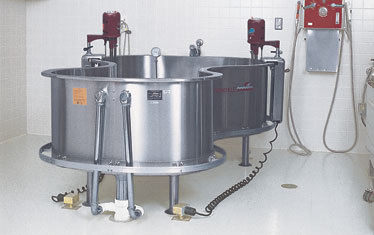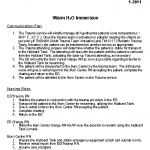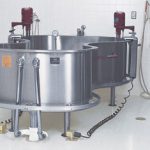It’s that time of year again in Minnesota. We’re getting 5 inches of snow tonight, so hypothermia season is officially here! I’m republishing a technique for rewarming patients faster than just about any other method. Most burn centers have large tanks for handling burn wounds, and many hospital have smaller therapy tanks that can be used for the same purpose.

Hypothermic patients need to be rewarmed using the most appropriate method. Patients with mild hypothermia (32-35 degrees centigrade) generally only require removal of wet clothing and surface warming. Moderate hypothermia (28-32 degrees C) to severe hypothermia (<28 degrees C) is very serious and requires more aggressive central rewarming techniques.
Basic central rewarming techniques, such as warm inspired gases, warm IV fluids, and gastric or peritoneal lavage can raise the temperature about 3 degrees per hour.
Rapid central rewarming techniques, like thoracic lavage (6 degrees/hr), AV bypass devices (1-4 degrees/hr), and cardiopulmonary bypass (18 degrees/hr) are typically used on patients with severe hypothermia.
A technique that we use at Regions Hospital involves the use of the Burn Center’s Hubbard Tank. Patients are carefully immersed, torso first, then one extremity at a time to avoid rebound hypothermia. It is possible to increase core temperature using this method faster than bypass (>20 degrees centigrade/hr)! Typical time in the tank is an hour or less for any degree of hypothermia.
Patients can be immersed with EKG monitors and IV lines in place. Temperature monitoring should be performed using a thermistor tipped urinary catheter. Many hospitals don’t have a full Hubbard tank, but do have smaller therapy baths that work nearly as well.
Tips:
- A physician must stay with the patient while immersed in case arrhythmias develop.
- Position the urinary catheter and collecting bag in such a way that urine in the tubing does not backwash into the bladder. This will falsely and rapidly increase the temperature reading.
Related post:


